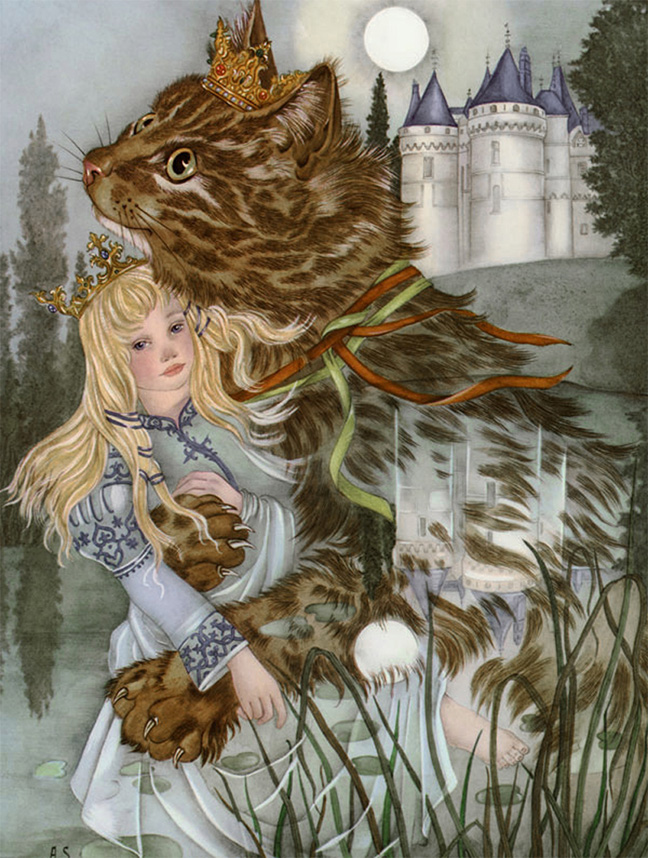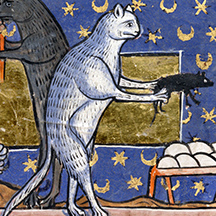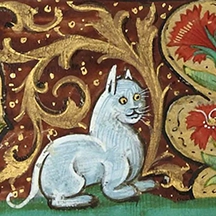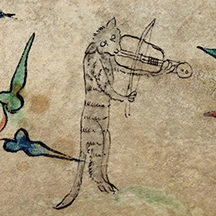Medieval Europe

Cats in Medieval Folklore
Within Medieval Europe, cats were feared more than praised. Cats began to have a major association to witches at this time and it created a sense of uneasiness for people that did believe in the myths. The swift nature of the felines plays into the idea that their silent and quick movements contributed to an evil nature. On the opposite end of the spectrum, cats were also thought to have powers to protect their owners. The most common belief at this time was that if a cat were placed within a baby cradle, it would help defend a newborn from evil spirits and would help them sleep better.
Cats in Daily Life
While cats played their common role of being the hunters of their household for small rodents and unwanted insects, they played a larger role than just that element of their life. Cats began to be recognized for their independence within a space and how the killing of prey allowed them to feed and care for themselves while being an asset to the home. Cats were seen as companions to their owners and were treated as more than just a pet. The lack of reliance that cats needed to demonstrate to their owners allowed for an odd, but functionable standard that both owner and feline could appreciate and respect.
Cats in Art and Literature
Cats have played a major part in Medieval art and literature. Within art, cats had begun to be put under a more mysterious lens where they were given the ability to have more personality with how they are presented. Within both art and literature cats were primarily seen as cunning, mysterious, and luxurious. A sense of humanlike qualities was a newer concept within art and literature but was discovered within cats. The themes that cats were now given as personalities revolve all around the concept of cats' independence. With the historically significant act of how they hunt and how they can rely on themselves and in a way are more than just pets.


